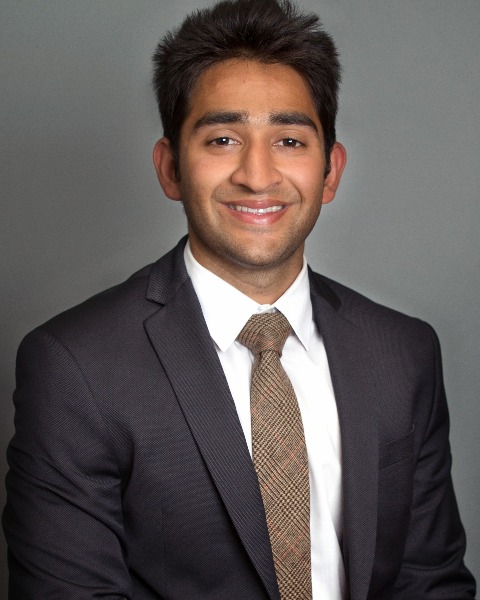Abstract Session
Abstract Session
(AS1) Single-cell Analysis Characterizes Non-enhancing Region of Recurrent High-grade Glioma
Monday, April 24, 2023
2:26pm - 2:34pm PST
Location: Los Angeles Convention Center, 402AB

Kunal S. Patel, MD
Resident Physician
University of California, Los Angeles
Los Angeles, California, United States
Presenting Author(s)
Disclosure(s):
Kunal S. Patel, MD: No financial relationships to disclose
Introduction: Both therapy for and molecular investigations into high-grade glioma largely focus on the contrast-enhancing (CE) portion of the tumor. However, given the invasive nature of glioma, residual tumor cells responsible for recurrence exist in the peripheral, non-enhancing (NE) region.
Methods: In this study, we used pre-operative magnetic resonance images to prospectively identify biopsy targets in the CE region and NE sites that lie 0.5-2.0 cm beyond the CE edge from multiple pathologically and molecularly distinct recurrent high-grade gliomas and leveraged single-nucleus RNA-sequencing to generate over 30,000 individual RNA profiles. We analyzed multiple glioma cellular states, non-malignant cell types, and cell-cell interaction patterns.
Results: Systematic comparison of the CE and NE regions identified altered composition of malignant and non-malignant cell compartments, as well as cell type- and patient-specific differences in gene expression and pathway activation profiles. We established that NE regions up to 1.5 cm beyond the CE edge contain up to 60% infiltrating malignant cells, of which a significant subset are actively proliferating. These NE glioma cells are preferentially in OPC-like and NPC-like rather than MES-like cellular states. NE cells have altered gene expression patterns, with specific upregulation of certain genes like DGKB and OPHN1 relative to CE regions. We built an integrated atlas of cell-cell communication networks among malignant and non-malignant subpopulations in the two regions of glioma and identified a significantly rewired connectome in the NE regions of all tumors. With respect to tumor-immune interactions, NE regions had decreased numbers of T cells and myeloid cells, along with decreased HLA:CD8 signaling between glioma and immune cells, suggesting decreased immune detection and cell mediated immunity.
Conclusion : Overall, we characterize the NE region in all pathological subtypes of recurrent high-grade glioma and identify possible mechanisms driving progression and recurrence, as well as areas of future therapeutic study.
Methods: In this study, we used pre-operative magnetic resonance images to prospectively identify biopsy targets in the CE region and NE sites that lie 0.5-2.0 cm beyond the CE edge from multiple pathologically and molecularly distinct recurrent high-grade gliomas and leveraged single-nucleus RNA-sequencing to generate over 30,000 individual RNA profiles. We analyzed multiple glioma cellular states, non-malignant cell types, and cell-cell interaction patterns.
Results: Systematic comparison of the CE and NE regions identified altered composition of malignant and non-malignant cell compartments, as well as cell type- and patient-specific differences in gene expression and pathway activation profiles. We established that NE regions up to 1.5 cm beyond the CE edge contain up to 60% infiltrating malignant cells, of which a significant subset are actively proliferating. These NE glioma cells are preferentially in OPC-like and NPC-like rather than MES-like cellular states. NE cells have altered gene expression patterns, with specific upregulation of certain genes like DGKB and OPHN1 relative to CE regions. We built an integrated atlas of cell-cell communication networks among malignant and non-malignant subpopulations in the two regions of glioma and identified a significantly rewired connectome in the NE regions of all tumors. With respect to tumor-immune interactions, NE regions had decreased numbers of T cells and myeloid cells, along with decreased HLA:CD8 signaling between glioma and immune cells, suggesting decreased immune detection and cell mediated immunity.
Conclusion : Overall, we characterize the NE region in all pathological subtypes of recurrent high-grade glioma and identify possible mechanisms driving progression and recurrence, as well as areas of future therapeutic study.
